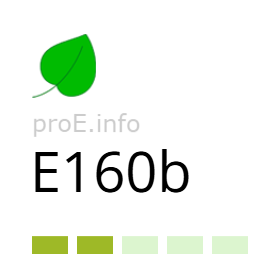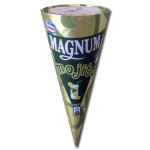
Other names for the additive (synonyms)
General Information
Food additive E160b (annatto extracts) is a plant-derived colorant that belongs to the category of carotenoids. The source of E160b is the seeds of the annatto tree (Bixa orellana), which grows in tropical and subtropical forests of South and Central America.
Annatto was first used by the Aztecs for cosmetic and ritual purposes, and later for coloring food and textiles. In the 16th century, annatto was introduced in Europe for coloring cheddar cheese. Today, E160b is widely used in the food industry of the Caribbean, Latin America, and Europe.
The reddish seed coat of annatto seeds contains up to 5% pigment, 70–80% of which is fat-soluble bixin. The water-soluble form of the pigment is known as norbixin.
Bixin is obtained by extracting the outer seed coat using solvents, alkalis, or oils, depending on the subtype of the additive. The chemical formula of bixin is C25H30O4.
Norbixin is produced by hydrolyzing extracted bixin in an aqueous alkaline solution. The chemical formula of norbixin is C24H28O4.
The Regulation (EU) No 231/2012 describes three subtypes of E160b:
- E160b(i) – solvent-extracted annatto (bixin, norbixin);
- E160b(ii) – alkali-extracted annatto;
- E160b(iii) – oil-extracted annatto.
The E160b additive powder may contain, apart from bixin and norbixin, by-products of hydrolysis, thermal degradation products of bixin, and other substances extracted from annatto seeds.
The color of E160b ranges from yellow to dark orange, its taste is described as spicy-sweet, and its aroma as peppery with nutmeg notes. The pigment is resistant to heat, light, and acidic environments.
Effects on the Body
Benefit of Additive E160b
Annatto extracts are rich in carotenoids and tocotrienols, which act as antioxidants. Structurally, they are similar to vitamin E and may provide protective effects against oxidative stress and certain chronic diseases. Research also indicates potential benefits of annatto in cancer prevention.
Risks of Additive E160b
Despite its natural origin, annatto may cause allergic reactions. In a 1978 study, 26% of patients with chronic urticaria reacted to annatto-containing foods within 4 hours. This was a higher response rate compared to other natural and synthetic dyes: (Amaranth 9%, Tartrazine 11%, Sunset Yellow FCF 17%, Food Red 17 16%, Ponceau 4R 15%, Erythrosine 12%, and Brilliant Blue 14%). Recent studies also confirm its allergenic potential.
EFSA’s 2016 assessment showed that bixin and norbixin are absorbed in the gastrointestinal tract, with norbixin being the main metabolite in plasma. In 90-day studies in rats, Annatto B, C, E, and F extracts caused no mortality or major pathologies, but did show increases in liver and kidney weights, as well as changes in blood and urine parameters. High doses of Annatto C led to liver necrosis in rats.
EFSA set an acceptable daily intake (ADI) of 6 mg/kg body weight for bixin and 0.3 mg/kg for norbixin.
Long-term carcinogenicity studies reviewed by JECFA found no tumorigenic effects. No teratogenic or reproductive toxicity was observed. In the US, the FDA classifies annatto as a natural colorant that does not require certification.
Thus, when consumed within the ADI limits, the additive is considered safe, except for the risk of allergy in sensitive individuals.
Uses
In the food industry, E160b is used as a colorant, giving products yellow to orange shades and a light nutty-spicy flavor. It is most commonly used for coloring cheeses (e.g., Cheddar, Gloucester, which has been colored with annatto since the 16th century).
- hard cheeses (Cheddar, Gloucester);
- butter and margarine;
- mayonnaise and sauces;
- dairy spreads and creams;
- baked goods and snacks;
- rice, potatoes, chips, breakfast cereals;
- smoked fish.
Outside the food sector, annatto extracts are used in cosmetics (lipsticks, body paints) and pharmaceuticals (burn remedies, insect repellent creams, skin care).
Legal Status
In the European Union, annatto (E160b) is included in the list of authorized food additives (Regulation (EC) No 1333/2008, No 231/2012). In Ukraine, annatto extracts are also permitted in line with European legislation.
In its 2016 assessment, EFSA recommended replacing the older subtypes (E160b(i–iii)) with Annatto B, C, F, and G with revised specifications and stricter heavy metal limits.
In the US, foods with annatto are considered “naturally colored” and do not require special certification. In Canada and Japan, E160b is likewise permitted within ADI limits. JECFA’s ADI levels are consistent with EFSA’s: 6 mg/kg body weight for bixin and 0.3 mg/kg for norbixin.
E160b is recognized as safe in most other countries, provided regulatory limits and acceptable daily intakes are observed.
